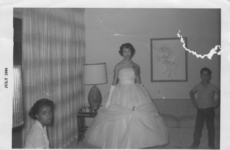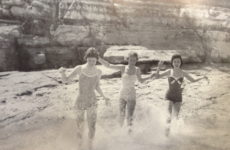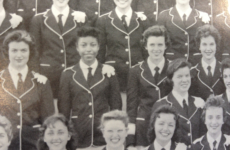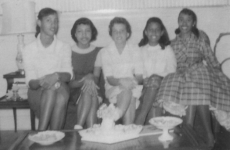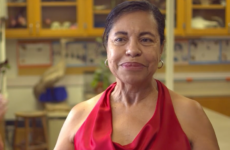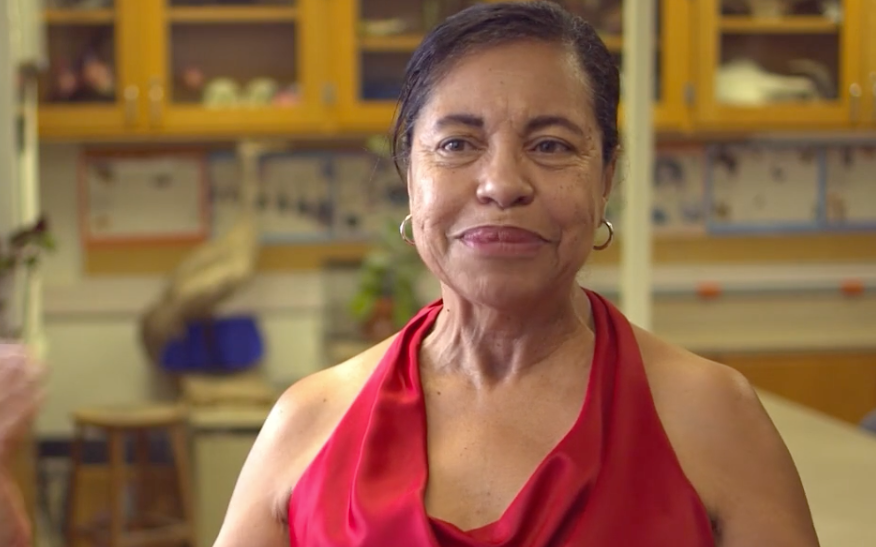
Joan Means Khabele
Community Activist
Barton Springs was a special place because it’s freshwater, it’s in a beautiful setting. The Park itself was superior. We knew about it, but we knew that we could not go into that water. Period.
Integrating Barton Springs
Barton Springs was a special place because it’s freshwater, it’s in a beautiful setting. The Park itself was superior. We knew about it, but we knew that we could not go into that water. Period. Historically, Black people were there and they used to swim there. They might’ve even washed their clothes there for all we know, but then segregation, the Jim Crow era, brought in rules that, “This is for whites only.” There was no park in Austin that we could go to other than Rosewood Park. There was no pool we could swim in other than Rosewood Park pool.
So it was segregated, but then all of that changed with the school integration decision, the Brown v. Board of Education decision of 1954. And Austin decided to go as slowly as possible by starting with the 12th Grade.
Integration came for me in ’57 when I left Kealing Junior High and went to Austin High. We were scared to death. We were scared to death because our first day of school was the day after Little Rock and Little Rock really hit the news because Governor Faubus got troops out and, you know, didn’t let the Black kids in. And the white parents were shouting at the Black kids, and throwing things at them, and threatening violence, and that was terrible. So the very next day, I came to Austin High.
I had been valedictorian at Kealing, come from my father’s a professor at Huston-Tillotson. My mom’s an educator, later became a supervisor in the independent school district. So we had a very middle class background. And so I felt, if I’m going to a different school, I should take advantage of everything. So I was known because I joined everything and there were a lot of incidents where horrible things happened because I joined them.
The principal saw me as a sort of leader of the 8 Black kids in my class. He called me in in the spring of 1960 and said, “I see you as a leader of the kids in your class, and I want you to go back to them and tell them that I’m very sorry, but you cannot attend the senior picnic.” And everybody had been looking forward to the senior picnic and for eons, that’s where Austin had their senior picnics. They had their senior picnics at Zilker Park and swam at Barton Springs. So this was a custom. Now, we had been here for three years. I was upset. I cried. You know, I walked out because he said, “It’s the law.” These are Jim Crow laws. Nothing he can do about the law. And so I went out and cried and told my friends, “Ah, we’re not supposed to go to the senior picnic.”
And then started organizing after that and fortunately, I wasn’t really thinking about it at the time, but fortunately I brought in some 11th graders, which means once I went off to the University of Chicago, there are still people who can carry on if we failed to open up Barton Springs and Zilker Park.
So what we did was got parents to sign petitions, got students to sign petitions so we had 11th and 12th grades, grade students involved in this. Most of my friends at Austin High were people kind of on the edge like me. They could be Quakers. They could be Unitarians. Jewish, whoever was sort of on the edge of West Austin society as such.
I’m talking about Austin High being a place that was so great that the Governor’s children went to Austin High. The legislator’s children went to Austin High. The rich folks in West Austin, Tarrytown, you name it, went to Austin High. Very few kids went to private school.
We decided to go to the City Council. I remembered going there without my parents’ permission and I think I lied to them that I was at some kind of afterschool activity. We were saying they should open up Barton Springs. Open up Zilker Park. I think we were thinking not only for our picnic but also just open it up. Now, that could raise a lot of blood pressures in the white community of that day.
I kind of slightly remember maybe we were allowed to go to the Park, but never to get into the water. We were not to get into that water and, you know, there’s all sorts of ignorance, you know, about getting in too close or in an intimate environment with Black people on the part of whites.
So what we did (after this) was we swam-in. A swim-in is you just jump in and then they come and pull you out. You go around the building. You go back in and you just do this all day. There was no fence around Barton Springs at that time. So I really believe that once we started the swim-in, we got in touch with a couple of university students and before we knew it, University of Texas, Huston-Tillotson, St. Ed’s, all kinds of young people joined in this protest.
So that summer, we failed, so this just continued to be swim-in, swim-in, swim-ins. Then the next summer more swim-ins and eventually Beverly Sheffield (Austin Parks and Recreation Director) must’ve been part of that decision to go ahead to open both Barton Springs and the Park to anybody.
And as far as I know—and this is, I’m not trying to take credit for anything—but as far as I know, this began the activist stage of civil rights in Austin. Before it was, you know, test cases. But opening Barton Springs and Zilker Park, I believe, really started a lot of other things in other areas of the city.

